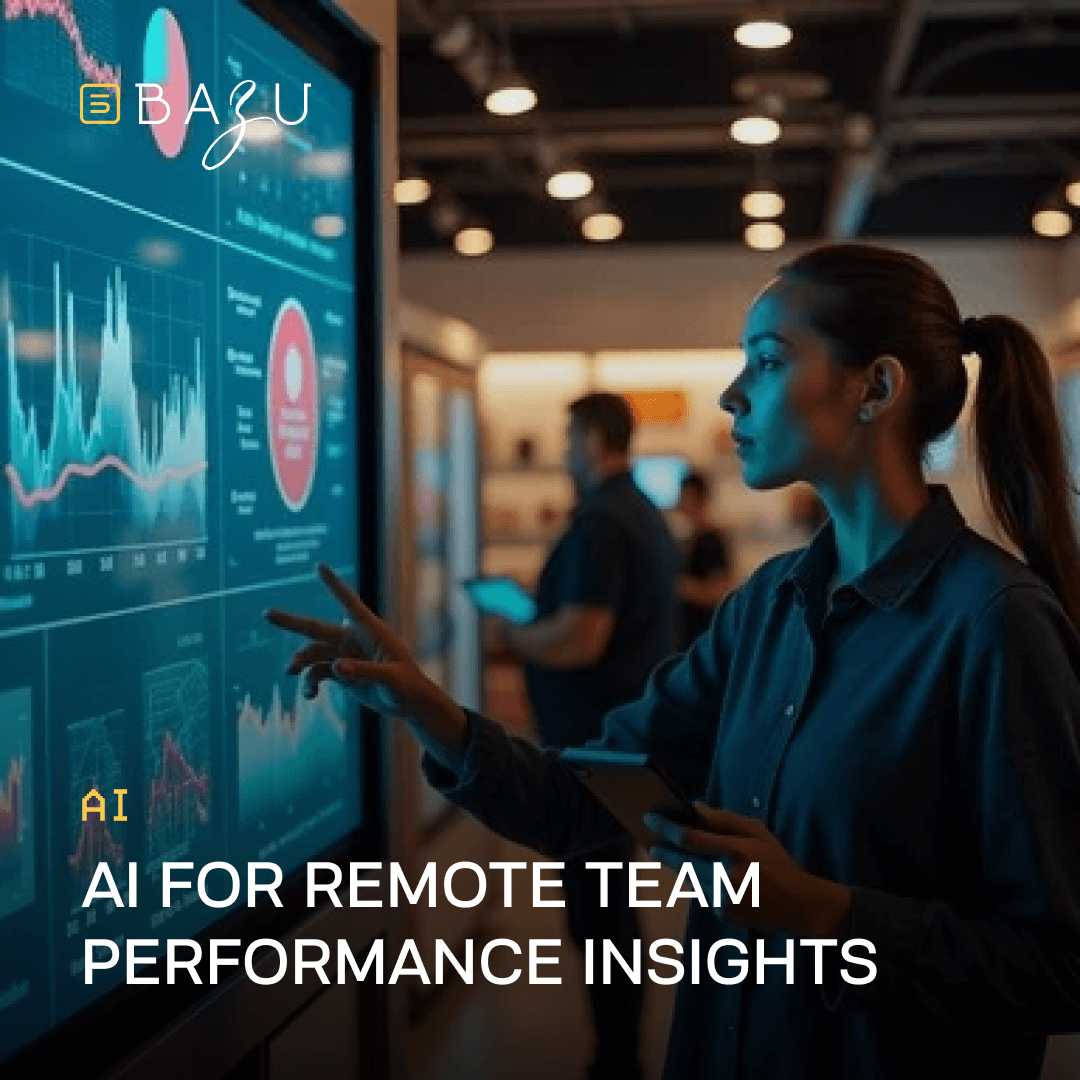How AI dashboards are transforming business decision-making
In today’s fast-moving and highly competitive markets, data is only as valuable as the insights it can provide. Many businesses gather enormous volumes of information daily, yet struggle to extract actionable intelligence from this sea of data. Traditional dashboards, while helpful, often fall short – they present historical or static data without deeper context, leaving decision-makers guessing about what the numbers really mean or how to respond.
This is where AI dashboards come into play, revolutionizing the way businesses interpret data by combining advanced artificial intelligence with dynamic data visualization. AI dashboards don’t just show what happened; they analyze patterns, detect anomalies, and forecast future outcomes – all in real time. This ability to deliver predictive insights equips leaders to make proactive, well-informed decisions quickly, transforming raw data into a strategic asset.
As more organizations recognize the power of AI dashboards, they are becoming a must-have tool across industries. From retail and finance to manufacturing and SaaS, AI dashboards enable businesses to not only react to events but anticipate them, reducing risks and identifying growth opportunities faster.
In this comprehensive guide, we’ll dive into the core features, benefits, implementation strategies, and industry-specific applications of AI dashboards – giving you everything you need to leverage this technology effectively.
What is an AI dashboard, and how does it differ from traditional dashboards?
At its core, an AI dashboard is a data visualization platform enhanced with artificial intelligence capabilities. While traditional dashboards typically display static charts, tables, and historical metrics updated on a fixed schedule, AI dashboards integrate:
- Real-time data streams from multiple sources
- Machine learning models that analyze and interpret data patterns
- Predictive analytics to forecast future trends and outcomes
- Anomaly detection to flag unusual events or potential issues automatically
- Natural language querying, allowing users to ask questions and get instant answers
- Automated insights and recommendations presented visually for quick action
This combination transforms dashboards from passive reporting tools into proactive decision support systems.
For example, instead of showing last quarter’s sales figures as a static chart, an AI dashboard might highlight an emerging downward trend in a particular region and suggest marketing actions to counteract it – all without waiting for manual analysis.
Looking to build a custom AI dashboard tailored to your business? BAZU specializes in designing AI-powered dashboards that integrate seamlessly with your existing systems. Reach out to discuss your needs.
Key features of AI dashboards explained in detail
Real-time data monitoring
AI dashboards constantly pull data from various business systems – CRM, ERP, marketing platforms, IoT sensors, social media feeds, and more – and display updated KPIs without delay. This immediacy allows teams to react to evolving situations quickly, whether it’s a sudden drop in sales or a spike in website traffic.
Predictive analytics and forecasting
Using machine learning, AI dashboards analyze historical trends and external factors (like seasonality or economic indicators) to forecast future performance. This can cover sales projections, customer churn risk, inventory demand, or even financial outcomes, empowering businesses to plan ahead with confidence.
Anomaly detection
AI models automatically scan incoming data for irregularities, such as an unexpected surge in product returns or unusual website activity. When anomalies occur, the dashboard generates alerts to notify relevant teams, enabling early intervention and problem-solving before issues escalate.
Natural language queries and conversational AI
Many AI dashboards now include user-friendly features that let non-technical users ask questions in plain English, like “What were last month’s sales in Europe?” or “Show me customers with declining engagement.” The dashboard then interprets the query and generates visual reports instantly.
Automated insights and alerts
Instead of sifting through endless reports, users receive AI-generated summaries, insights, and recommendations tailored to their roles. For example, a marketing manager might get an alert about a campaign underperforming, with suggestions for optimization.
Customizable visualizations and role-based views
AI dashboards can be configured to show different data views depending on the user – executives see high-level KPIs, sales teams get detailed pipeline metrics, and supply chain managers monitor logistics in real time. This customization ensures every team member focuses on what matters most to them.
Benefits of AI dashboards: why your business needs one
Faster and more informed decision-making
AI dashboards remove guesswork by presenting clear, contextual insights that empower decision-makers to act promptly. This agility is critical in markets where timing can make the difference between winning or losing customers.
Improved operational efficiency
By detecting inefficiencies, bottlenecks, or risks early, AI dashboards help teams optimize workflows and allocate resources more effectively, driving productivity gains and cost savings.
Enhanced forecasting accuracy
Machine learning models can analyze complex, multidimensional data that traditional methods miss – improving forecast reliability for sales, demand planning, budgeting, and risk management.
Democratization of data across the organization
With intuitive interfaces and natural language querying, AI dashboards enable non-technical users to explore data independently, fostering a data-driven culture and faster collaboration.
Personalized insights for different roles and teams
Role-specific dashboards ensure every employee sees relevant metrics and recommendations, enhancing engagement and accountability.
Competitive advantage through proactive insights
Businesses leveraging AI dashboards can anticipate market changes, customer behavior shifts, or operational challenges before competitors – making strategic moves ahead of the curve.
How to implement AI dashboards successfully: step-by-step guide
Step 1: Map and integrate your critical data sources
Start by identifying the key systems where your business data resides: CRM, ERP, marketing automation, financial software, production sensors, etc. Use APIs, ETL tools, or middleware to create a unified data pipeline feeding your AI dashboard in real time.
Step 2: Define clear KPIs aligned with business goals
Avoid drowning in data by selecting the most impactful KPIs for your industry and organization. For example, a retailer might prioritize inventory turnover and sales per region, while a SaaS company focuses on churn rate and user engagement.
Step 3: Choose an AI dashboard platform that fits your needs
Options range from leading BI tools enhanced with AI (Power BI, Tableau, Looker) to fully custom-built dashboards incorporating proprietary machine learning models. Consider scalability, ease of integration, user interface, and cost.
Step 4: Prepare and clean your data
Quality data is essential. Perform data cleansing, normalization, and enrichment to ensure your AI models learn from accurate and relevant inputs.
Step 5: Develop and train predictive models
Work with data scientists or your AI vendor to build models tailored to your business challenges – be it forecasting, anomaly detection, or customer segmentation.
Step 6: Design user-friendly, customizable dashboards
Create dashboards that highlight actionable insights clearly, with interactive features like drill-downs, filters, and alerts. Gather user feedback to continuously refine the experience.
Step 7: Train your team and encourage adoption
Conduct training sessions to familiarize users with the AI dashboard’s capabilities. Promote a data-driven culture by demonstrating real business impacts.
Step 8: Monitor performance and iterate
Regularly review AI model accuracy, user engagement, and business outcomes to optimize your dashboard and maintain relevance.
Need expert guidance to build your AI dashboard? BAZU provides end-to-end consulting, development, and support – helping you turn your data into a competitive advantage.
Real-world examples of AI dashboards driving business value
Retail: Inventory optimization and dynamic pricing
A major retail chain implemented an AI dashboard that analyzes sales trends, stock levels, and competitor pricing in real time. The system forecasts demand by product and region, alerts managers about low stock, and suggests dynamic price adjustments. This led to a 15% reduction in excess inventory and a 10% increase in revenue during promotional campaigns.
Finance: Fraud detection and regulatory compliance
A financial institution uses an AI dashboard to monitor transactions, identify suspicious activity patterns, and automate compliance reporting. Real-time alerts allow the fraud team to investigate and prevent losses swiftly, reducing fraud incidence by 25%.
Manufacturing: Predictive maintenance and quality control
An industrial manufacturer connects sensor data from machines to an AI dashboard that predicts potential equipment failures before they occur. Maintenance teams receive proactive alerts, minimizing downtime by 20% and improving product quality through early defect detection.
SaaS: User engagement and churn prediction
A software company tracks user behavior metrics through an AI dashboard that identifies accounts showing signs of disengagement. The system triggers automated outreach campaigns, increasing customer retention by 18% over six months.
Industry-specific considerations and tips
E-commerce
- Focus dashboards on customer lifetime value, conversion funnels, and campaign ROI
- Integrate marketing automation and social media data for holistic insights
Healthcare
- Combine clinical data with operational metrics while ensuring strict HIPAA compliance
- Use AI dashboards for patient outcome predictions and resource planning
Logistics and supply chain
- Prioritize real-time shipment tracking, route optimization, and demand forecasting
- Integrate weather and geopolitical data for predictive risk management
SaaS and technology
- Monitor feature adoption, support ticket trends, and subscription renewals
- Use AI to predict onboarding success and upsell opportunities
Overcoming common challenges in AI dashboard adoption
- Data silos and integration hurdles: Employ data engineering best practices to create centralized, clean data lakes.
- Poor data quality: Establish rigorous data governance and cleansing processes.
- User resistance or lack of training: Invest in comprehensive onboarding and ongoing support.
- Complexity and information overload: Start with MVP dashboards focusing on core KPIs, then expand gradually.
- Security and compliance: Implement role-based access control, encryption, and audit trails to protect sensitive data.
Final thoughts: unlock the power of AI dashboards for your business
AI dashboards mark a fundamental shift in how organizations leverage data. By moving from retrospective reports to real-time, predictive intelligence, companies gain the agility to act decisively in a complex world.
From enhancing operational efficiency and improving customer experiences to enabling strategic foresight, AI dashboards unlock tremendous business value across industries.
At BAZU, we specialize in crafting AI dashboard solutions customized to your unique business challenges and data landscape – ensuring you extract maximum insights and ROI from your data investments.
Ready to transform your data into predictive business intelligence? Contact BAZU today to design and implement your AI dashboard solution.
- Artificial Intelligence


